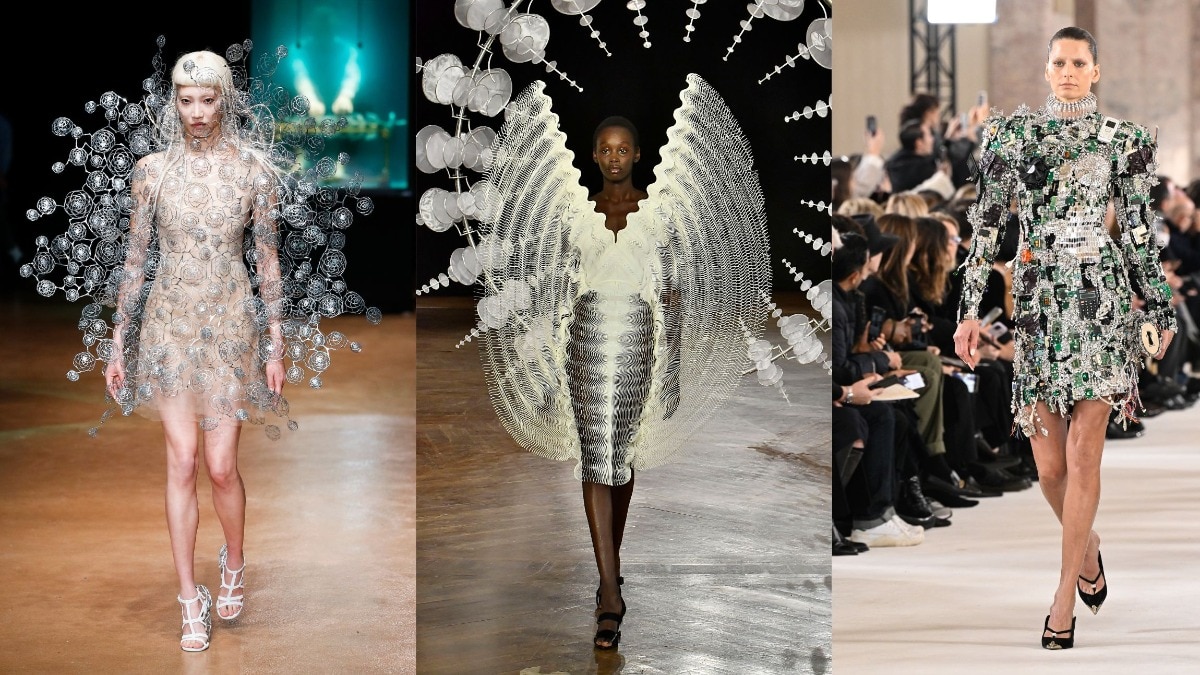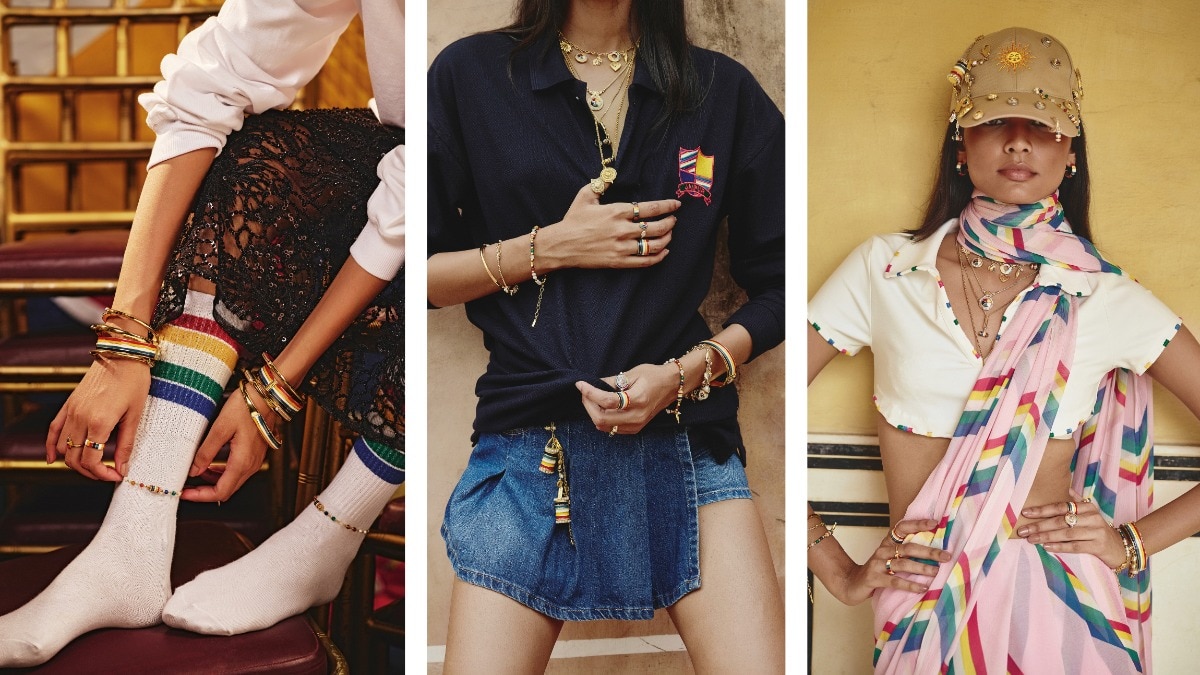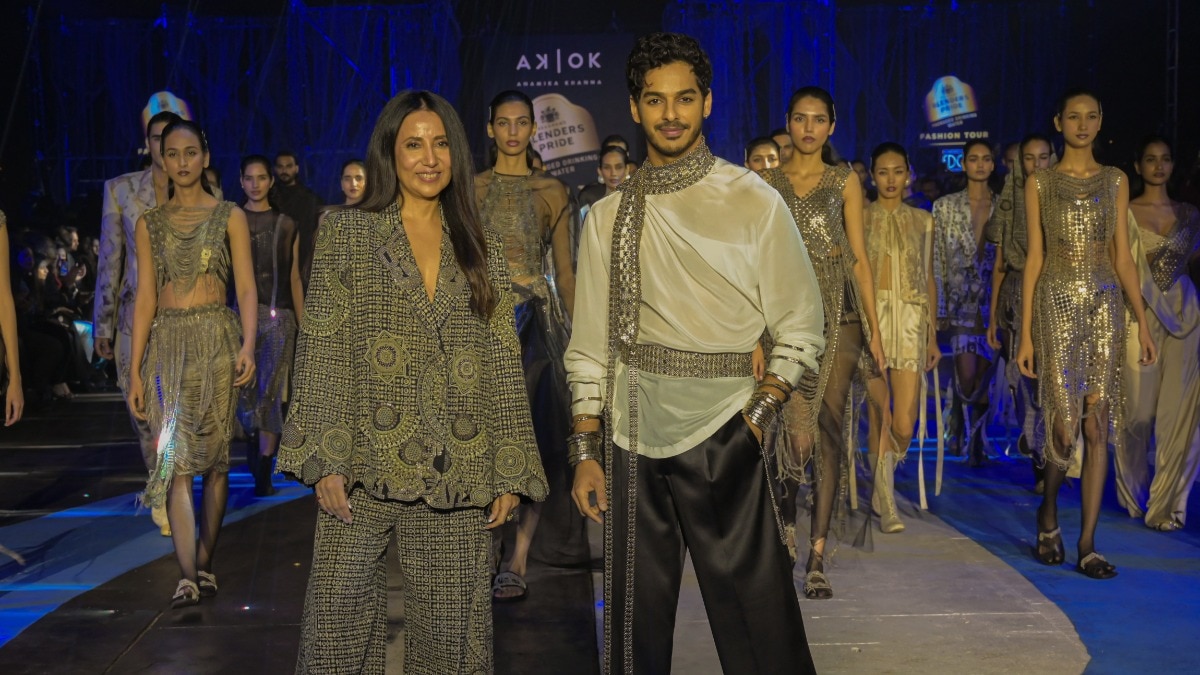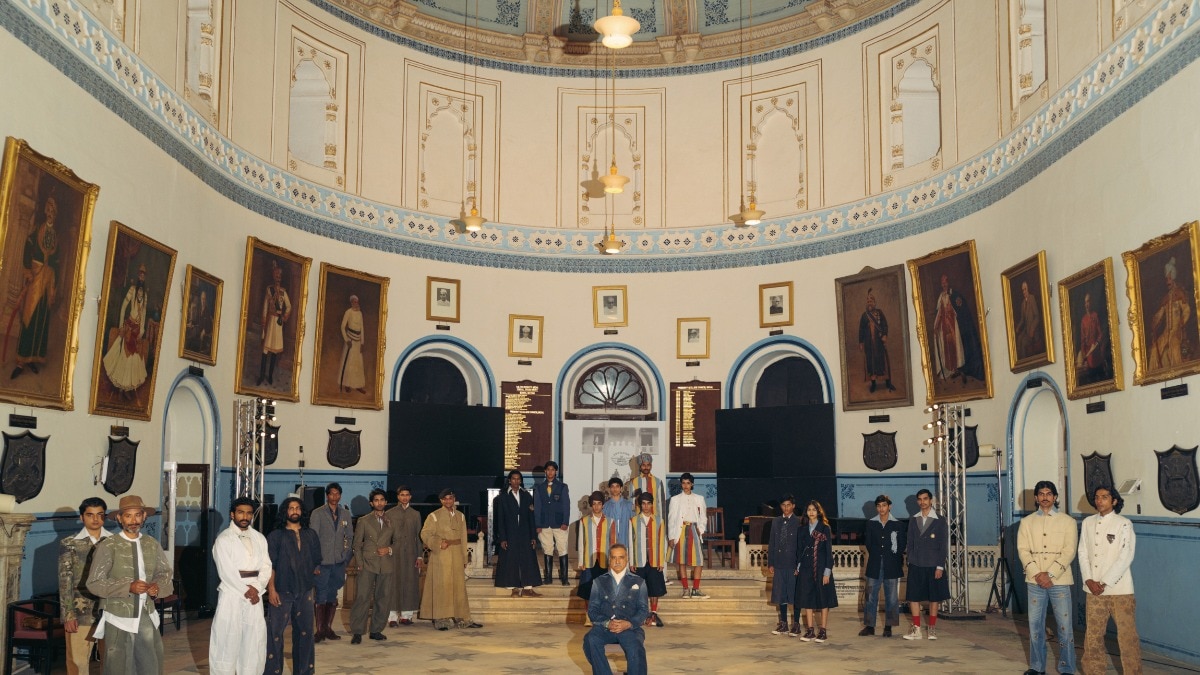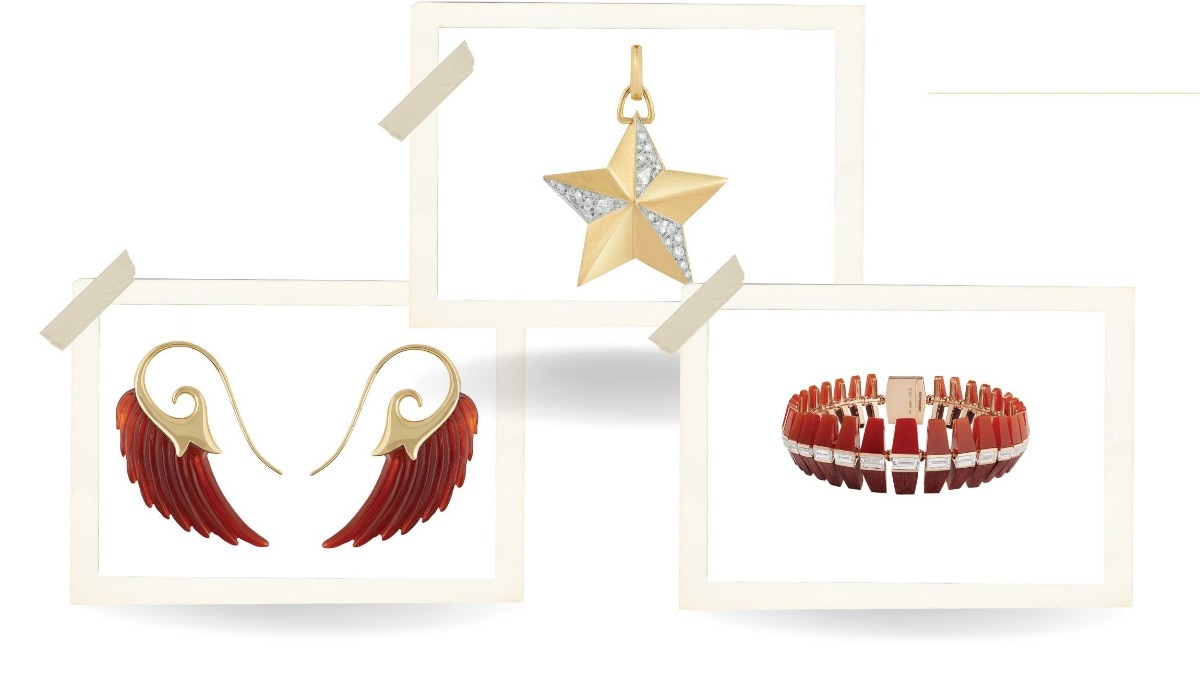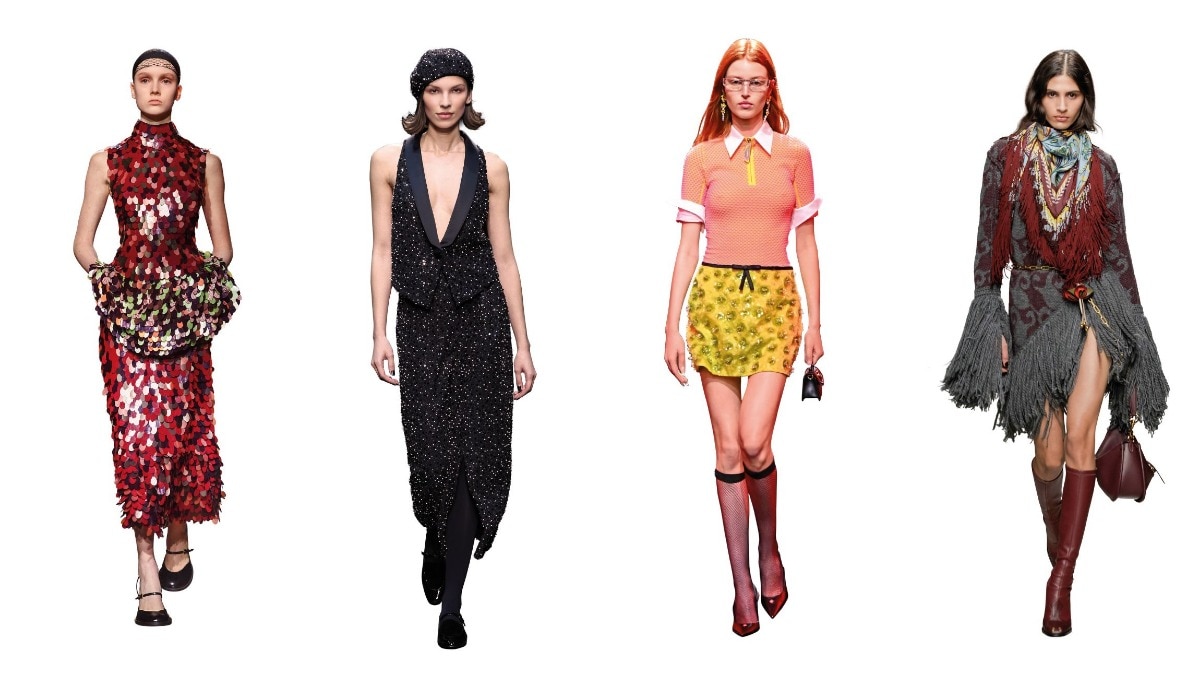
Amit Aggarwal explores the boundaries of fashion with structured chaos and refined simplicity
The designer talks to Bazaar India about his design philosophy, redefining ‘normal’ in couture, embracing unconventional materials, and more.


In the days leading up to the FDCI India Couture Week, I came across an Instagram post by Amit Aggarwal that said, “We don’t do normal”. Having read and written about the designer and his signature aesthetic from the time Aggarwal was described by the media as the ‘new wave’ in fashion back in 2017-18, to marvelling at his inventive approach to couture at present, I head to Aggarwal’s Noida-based atelier to feed my curiosity. Over rounds of single-shot espressos on a Saturday morning, I caught up with the designer amidst the couture week ‘madness’, who looked unassumingly calm, to comprehend his idea of ‘normal’ and get a preview of his new Couture’24 collection, Antevorta (personifying the Roman goddess of the future).

Aggarwal’s distinct design vocabulary, his affinity to present form, shape, and structure—mirroring scientific complexities—wrapped into the interconnectedness of life, has always been far from normal. His use of unconventional materials like, recyclable polymer sheets and rubber, never restricted him to attempt and reimagine the scopes of classic Indian silhouettes. “I’ve always felt the term ‘normal’ is a relative concept. At Amit Agarwal, we’ve always tried to do something which wasn’t considered normal. I started off with no financial backing. I had moved on from my creative director position at Morphe to start my label from scratch. I looked out for discarded materials that would become a larger language of what I wanted to create, for two reasons. Firstly, of course, for affordability, and secondly, from the comprehensive understanding of why something comes to an end? Why doesn’t it have an eternal aspect of continuing its life course by changing the purpose? So, I think form and function became a very important conversation. The use of alternative materials in design garnered attention and support from the press, and I’m truly grateful for it. But it was when we showcased our collection for the first time at the Couture Week in 2017-18, the whole gamut of things changed as no one expected couture created out of those unusual materials. Now it has become a product that resonates with wedding and occasion wear. And, it was tongue-in-cheek (laughs) to say that we don’t do ‘normal’ because I think that’s the tone we want to set for the new collection,” he smiles.

While his eponymous brand pushes design innovation into the mainstream, Aggarwal’s love for structure doesn’t restrict his inclusive ethos. As a plus-sized woman, I tend to hold representation, big or small, close to my heart. I mention seeing Bangladesh-based model and content creator, Sobia Ameen, last year in an ethereal Amit Aggarwal creation. The signature metallic micro pleats on the gown facilitated motion and fluidity, making Ameen a sight to behold. “On an individual level, I make the heart beat the beat of the mind. And I make my mind beat to the beat of the heart. It’s important for me that those two find a beautiful equilibrium in the sense of co-existence. I think a lot of times that the marriage or balance of those two is needed for creating the right recipe with the right woman. As designers or creative individuals, it is expected that you give them a great fit. The construction has to be impeccable. But I don’t think when people buy clothes or they fall in love with something, they are looking at the construction of it. The first striking factor is the way a garment makes you feel and the technical aspects come in later,” he elaborates.
Everything that is scientific has a balance and the designer thinks it’s the philosophy that adds the flavour to it—one can’t exist without the interconnectedness and the interdependence of both of them.

As I move on to question him on his creative process, Aggarwal explains, “I am 43 and have been making clothes for the last 23 years of my life. But I have realised that if you ask me to put it down, there is no process. I know it gets a bit challenging for the team but I also feel they enjoy the fact that there is an outcome that wasn’t visualised right at the beginning. This is what makes the journey exciting. There are times where I start with the material first, trying to explore what it can do. If it excites me, I need to attach material to emotion—it needs to go beyond the feeling of what it can do. The focus is on what it (material) can make you feel. Then, a part of the team creates the textiles first. Next, a lot of form exploration happens on the body. Sometimes, a large part of the collection is based on very specific calculations in terms of how triangles, circles, squares would come together to create shapes and forms. And how they can be sewn together to create a more architectural structure. So, the process is extremely fluid and I am blessed with a team that flows along. And sometimes in the course of my journey when I stop to flow, they give me the impetus and the stimuli to keep going further. It’s a collaborative effort.”

With his core background in design and fashion, Aggarwal looks at craft from a different lens. For him, the creative journey starts after the textile has been created. “Of course, there are multiple textiles that we create with our own weavers in the factory. But are also associated with others who closely work with us. We also try to source vintage, indigenous textile that has literally ended its course of life. To give you an example, we have worked with the Rabari community—the eternal nomads and travellers who collect wealth from all over the country. I know a husband and wife duo who collect beautiful vintage textiles. But unfortunately, none of those textiles are in the usable state. We sourced very fine Banarasis from the couple and restructured them to create interesting forms for the new couture collection. So, it adds up to the larger concept of time in eternity because I think we have given something a new lease of life,” he tells Bazaar India.

Amit Aggarwal’s Couture’24 collection, Antevorta echoes Einstein’s Theory of Relativity and explores the concept of ‘time’ through five distinct perspectives—Nowness, Linearity, Eternity, Conjurer and Balance. Each reflect a different school of thought and align with the core ideas of time. From garments that shimmer like starlight with crystal details, embodiment of curves and twists, to breathing life into pre-loved Banarasi saris with signature cording techniques. Additionally, the fusion of mythology and science, utilising corded textiles adorned with bugle beads and signature lamina scale embroidery, and multi-layered designs are crafted to evoke visual illusions of infinite patterns, capturing the unique balancing act of time.

Delving deeper into the nuances of sustainability and reflecting on cultural responsibility as a designer, Aggarwal elaborates, “While fair pay is non-negotiable, the biggest responsibility is to empower the minds of the artisans, and the team at large. The minute you empower their mind, you give them the authority to choose the life that they would have imagined for themselves. And when your mind is empowered, money is a by-product. They can have a higher dream for themselves, for the future, kids, and their families. Until the time you don’t do that, you are just doing a superficial job.”

Aggarwal quips about the trend of ‘creative’ collaborations in fashion that fail to bring the spotlight on creativity and end up being mere revenue models. “I can’t think of any interesting collaboration that’s happened in the country, at least in terms of fashion. There are superficial partnerships in the name of collaborations. No one’s partnering on crafts in India. Take designer Iris Van Herpen for instance, she collaborated with an aeronautics company and worked in tandem with an aeronautical engineer to understand how they craft an aeroplane, and then used that as a design language to push the envelope of fashion. So, that is a far deeper, more interesting, and sustainable collaboration.”

So, what’s next for Amit Aggarwal? I ask. “A little bit of a rest or pause on a personal note,” he laughs and adds, “we are expanding in terms of retail. There are two upcoming stores in the pipeline. I also feel with the new collection, I am also on the verge of editing a few things out. We do want to carve a larger narrative on the brand’s aesthetic which goes beyond the gamut of fashion and look for answers to questions like, What happens to your clothes after they are worn? What is the alternate purpose of it? For all the years that we live in our clothes, we impart our life to the clothes. And I am sure in a larger narrative, clothes can impart a lot more than just covering your body. Additionally, we are looking at extending our visual narrative to the world and dabble into wedding décor. It will be fun.”
All images: Ishita Mishra
This article first appeared in Harper's Bazaar India, August 2024, print edition.
Also read: A peek into Bhanu Athaiya's iconic creations that shaped the look of Hindi cinema

